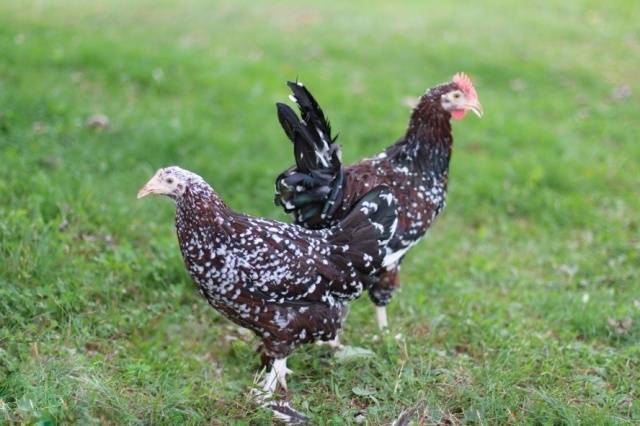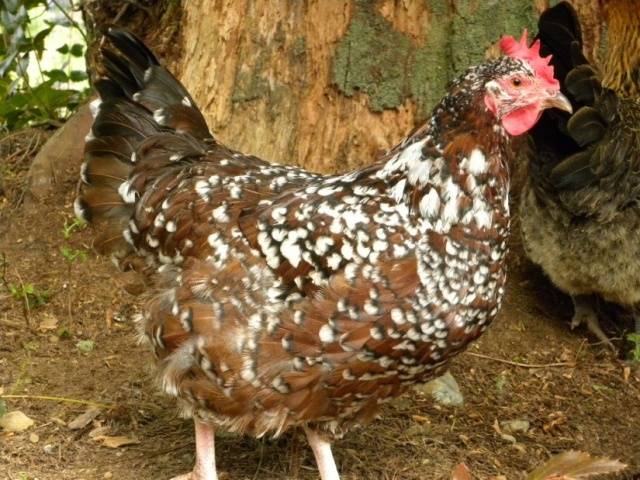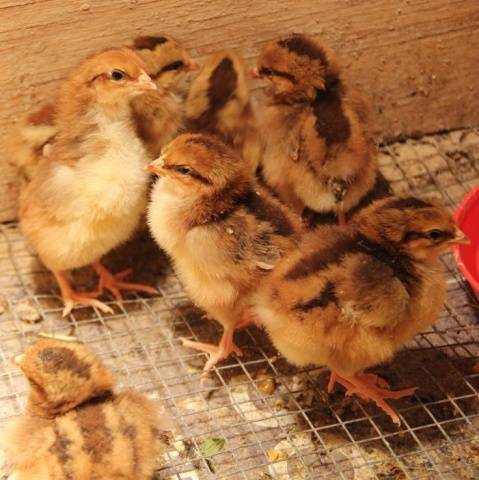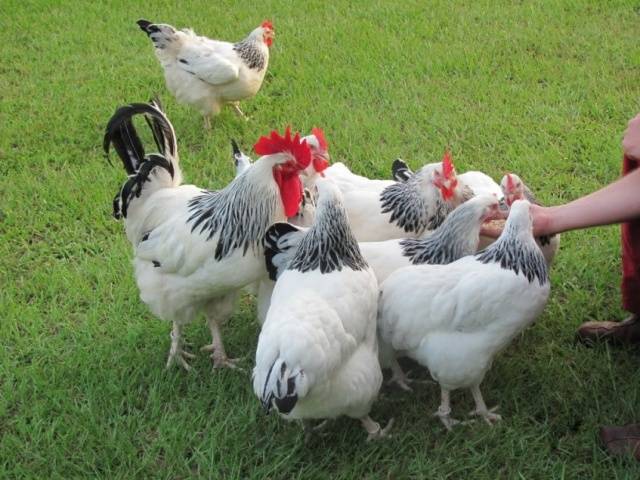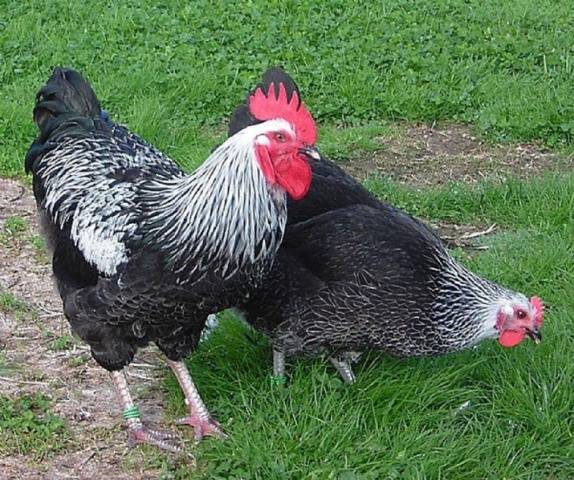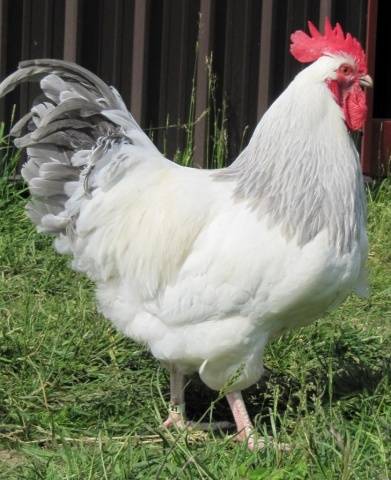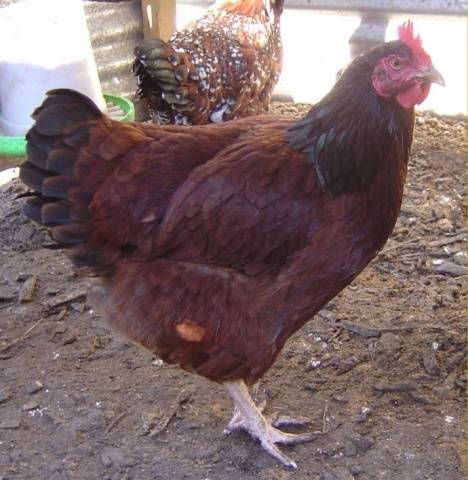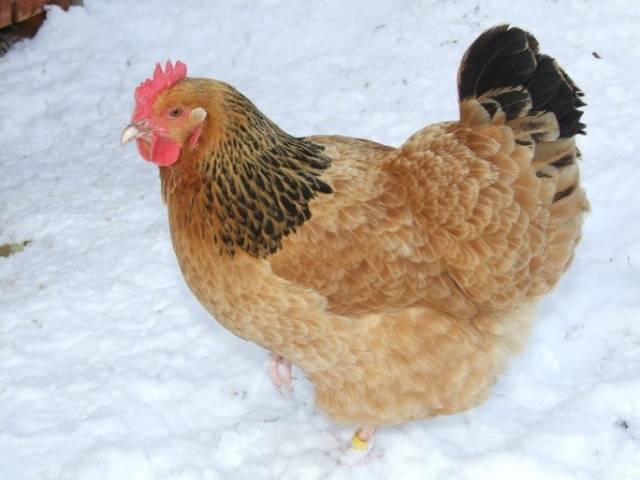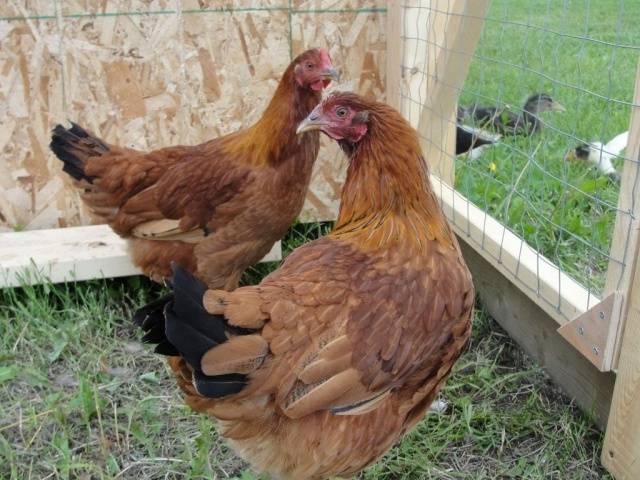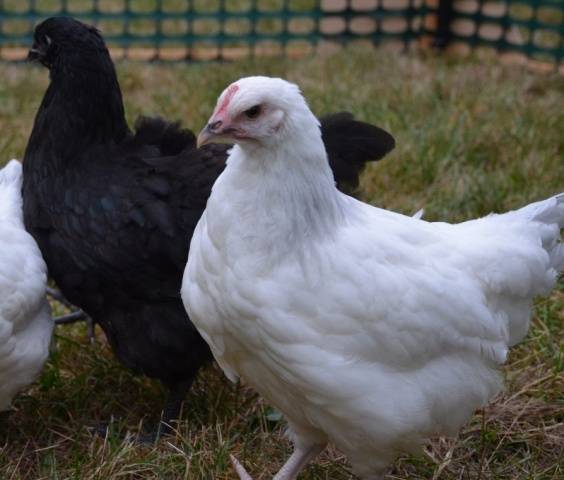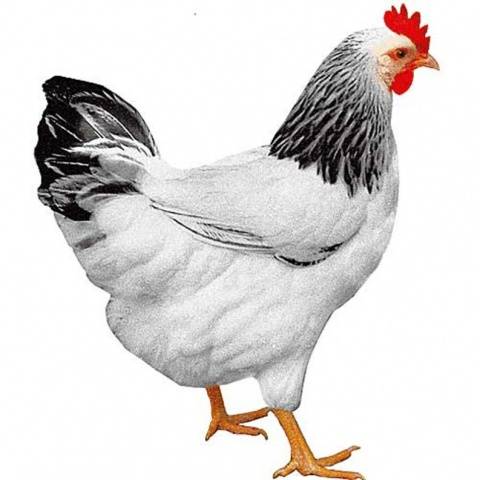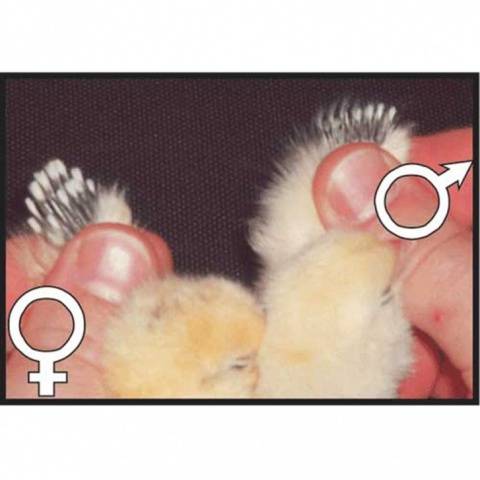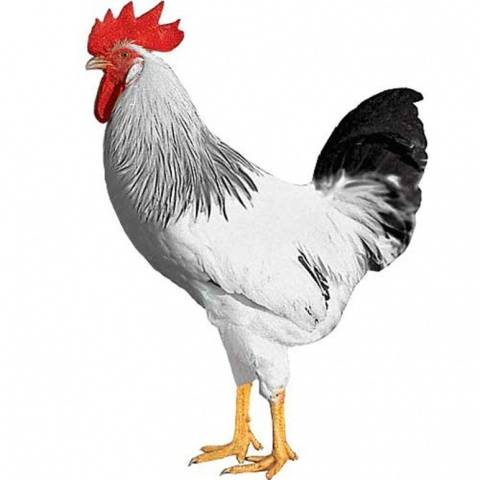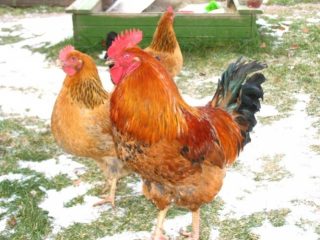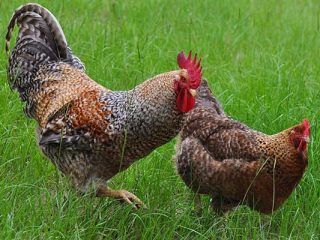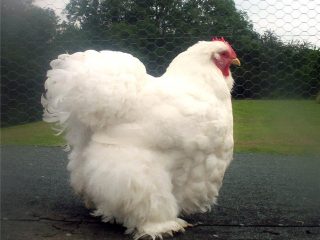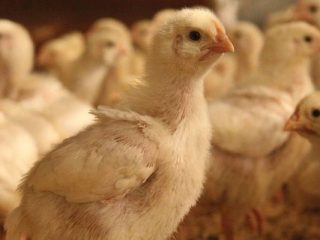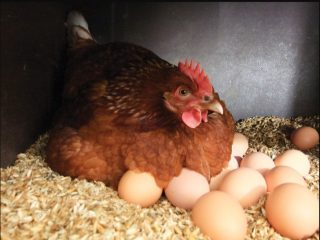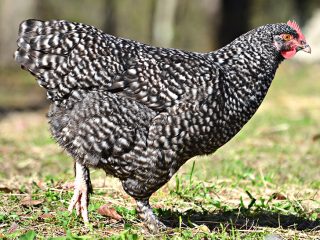Content
Sussex is a breed of chickens, considered one of the oldest breeds in England. The first Sussexes were presented at an exhibition in 1845. When developing standards for chickens, Sussex was first forgotten. The standard for Sussex chickens was developed only in 1902 and initially included only three colors: Colombian, red and parcelian. The latter was the oldest color of the Sussex chickens. In the 20s of the twentieth century, yellow, lavender and white appeared. The most recent color was silver.
The variety of colors of the Sussex breed is most likely influenced by the overflow of Indian blood chickens: brahmaas well as English silver-gray Dorkling.
The British Poultry Association today recognized 8 color options:
- Colombian;
- brown (brown);
- fawn (buff);
- red;
- lavender;
- silver;
- parcel;
- white.
The American Association recognizes only three colors: Colombian, Red, and Parcels.
The history of the breeds states that the Sussex chickens were bred in Sussex, but is silent about which one.
During World War II, the Sussexes and rhode islands were the main breeds for chicken production in England. At the same time, the foundation was laid for the development of the utilitarian lines of Sussex chickens. The industrial lines of the Sussex breed of chickens were inferior in grace and beauty to the "old" type, but were more productive.
With the development of industrial production of egg and meat chicken, with a bias in obtaining meat, the Sussex breed began to hybridize to increase egg production. An industrial dominant strain Sussex d 104 of the egg direction has appeared.
Breed sussex chickens, description with photo colors
Sussex is a breed of chickens, the description of which in terms of productivity may differ depending on whether it is the original breed or already an industrial hybrid. There are also names for types of sussex that do not actually exist.
"Chickens High Sussex" with a high degree of probability is a distortion of the original name of the egg hybrid Highsex, which has nothing to do with Sussex. This also includes "high sussex brown chickens." Hysex hybrid exists in two color variations: white and brown. Neither variety has anything to do with the English Sussex. Hisex was created in Holland by Eurybride on the basis of Leghorn and New Hampshire. The confusion has arisen over the original English reading of Sussex, which sounds like "Sussex" when correctly pronounced.
Description of original sussex chickens:
- general impression: graceful slender bird;
- the head is large, long, with a leaf-shaped red crest;
- face, urine and earrings, depending on the color, may differ in color;
- the eyes are red in dark-colored birds and orange in light-colored chickens;
- the neck is short, erect;
- the back and loin are wide, straight;
- the top line forms the letter "U";
- broad shoulders, wings tightly pressed to the body;
- the chest is elongated, deep, well muscled;
- tail of medium length, fluffy. The braids are short;
- the legs are rather short with non-feathered metatarsals.
Sussex rooster weighs 4.1 kg, chickens - about 3.2 kg. Egg production is 180 - 200 eggs per year. Egg strains can carry up to 250 eggs per year.Egg shells can be beige, white, or spotted.
Photo and description of the colors of sussex chickens
With colors, about the same confusion as with "high sussex". Some colors, depending on the language of the country, can have several different names. The oldest Sussex color has at least three names for the same thing.
Variegated color
Chickens of this color are also called "porcelain sussex" or "parcelian sussex". On the main dark brown or red background of the feather, chickens have frequent white spots. When diluting, it is difficult to achieve a high-quality color, therefore the density of the white spots may vary.
Chickens of Sussex porcelain at hatching are light beige in color with a dark stripe on the back.
Sussex Colombian.
White body with black feather on the neck and tail. Each black feather on the neck is bordered by a white stripe. The tail feathers and braids of the rooster are black; the feathers covering them can also be black with a white border. The reverse side of the wing feathers is black. With the wings tightly pressed against the body, black is not visible.
Silver.
Almost negative of Colombian color, but the tail is black and the chest is gray. The long feather on the lower back of the rooster also has a light color - a heritage of Dorkling.
Rooster Sussex lavender.
In fact, this is a Colombian color, which was superimposed on the action of the clarifier gene. Lavender sussex has a second name - "royal". The color was created in honor of the future coronation of Edward VIII, which did not happen. It was believed that the color of these chickens would have the same colors as the flag of the United Kingdom. The "royal" Sussex chickens disappeared during the Second World War.
In the 80s of the last century, the color was first recreated on a dwarf version of Sussex. Considering that mutations leading to the appearance of lavender color in chickens occur quite often, it was not difficult to restore the "royal" color. The lavender gene for chickens is not lethal, but at the same time it is recessive. Under such conditions, it is very easy to fix this color. The large "royal" version of the birds of this breed is still rare, but their number is gradually increasing.
Sussex brown, he is brown.
This color variation adds confusion to the names of breeds of chickens with the same colors. It is just a regular dark brown color with a slight darkening to black feathers on the neck and tail.
Pale yellow.
The color is similar to the Colombian, but the main body color is fawn.
Red.
Not every specialist will be able to distinguish red Sussexes from industrial hybrids. Even the black feather on the neck, which is characteristic of light colors, is absent.
White.
White Sussex is a normal white chicken. Orlington in the background.
Features of the breed
Chickens are unpretentious to the conditions of detention. They have a calm, friendly character. Funny reviews of foreign owners about Sussex chickens:
- pluses: independent, consider themselves to be in charge, happy, friendly, talkative;
- cons: she will pester you until she gets what she wants.
There is also the opposite opinion: good layers, but noisy, angry and hooligan.
The old-type Sussex are good layers and brooders, but the industrial line of dominant 104 Sussex is already devoid of the brooding instinct.
Breed of chickens dominant sussex
Yaytsenoskaya line of chickens of the Sussex breed. It is very popular in private farmsteads of European countries, due to its good adaptation to various climatic conditions. Chickens dominant Sussex 104 thrive equally well in the mountainous regions of Switzerland, the forests of Poland and the dry climate of Italy.
The plumage is similar to the Colombian color of the old type chicken. Bred by crossing a line of slow-feathering Sussex cocks with fast-feathering layers of the same breed.
Due to this, the dominant Sussex is the autosex line. Males receive the dominant K allele from hens and fledge slowly, while females with the recessive allele fledge much faster.
The egg production of hens dominant Sussex is not much inferior to industrial egg crosses. They lay up to 300 eggs in 74 weeks of production. The weight of the eggs is 62 g. The weight of the hens of this line is 1.8 kg.
"Official" pros and cons
The advantages of the breed include their unpretentiousness, high meat productivity of the old type and high egg production of a modern industrial line. Disease resistance, the ability to receive autosex chickens. True, in the latter case, one must understand genetics.
The downsides are their "talkativeness", which often creates problems with neighbors. Some chickens may show increased aggressiveness towards their fellows. But it is better to discard such birds from breeding.
Conditions of detention
For chickens of this breed, floor keeping on a deep litter is optimal. But it does not negate the need of Sussex chickens for long walks in the aviary. In the southern regions of Russia, the chicken coop does not need to be insulated, these chickens tolerate frost well. But in server regions, it's best not to put them at risk. In addition, even if everything is in order with the chicken, egg production at low temperatures in the room will probably drop. It is best to give the chickens the opportunity to choose whether they are in the hen house today or go for a walk.
The diet
It is best to feed adult Sussex chickens with industrial compound feed. If the supply of industrial feed is tight, these birds will do just fine with the usual village feed, which includes grain mixtures and wet mash.
The situation is similar with small chickens. If there is, then it is better to give starter feed. If there is no compound feed, you can feed them boiled millet and finely chopped eggs with the addition of a drop of fish oil.
Reviews of the Sussex breed
Conclusion
To obtain egg products, it is advantageous to take an industrial line of sussex chickens bred in Sergiev Posad. Show lines are not as productive, but they usually have significantly more regular build and beautiful plumage. Considering that show lines are an old type of breed, focused more on meat, you can get chicken instead of eggs from “show” chickens.
